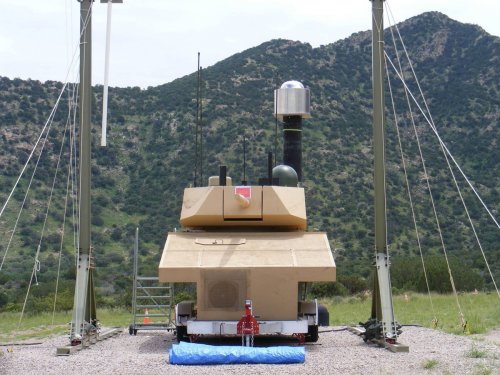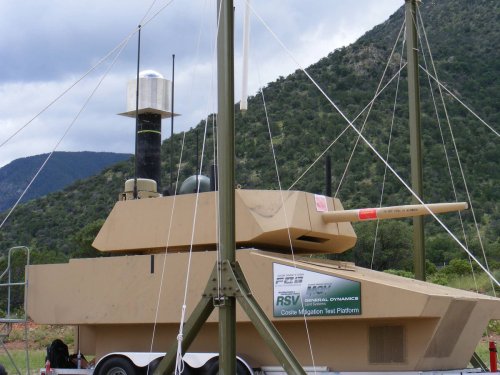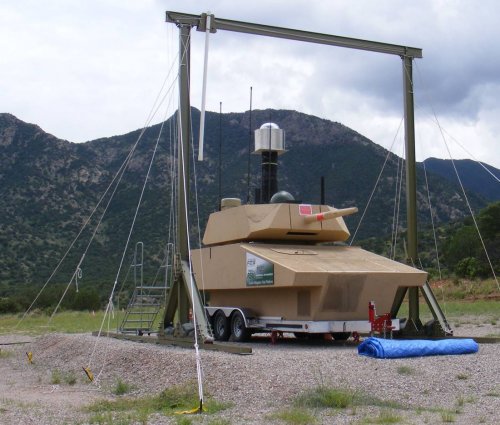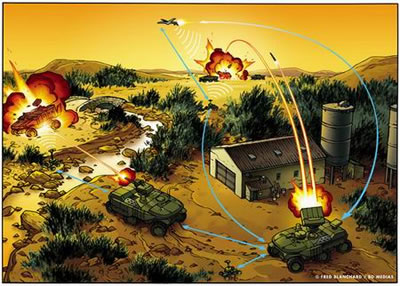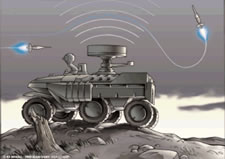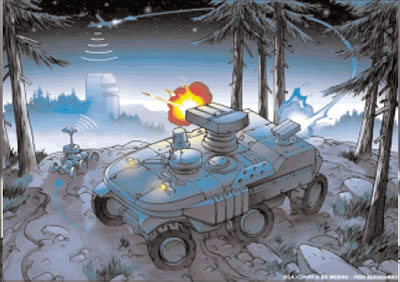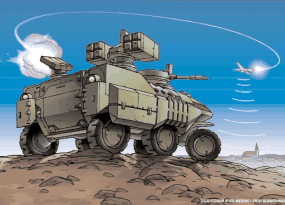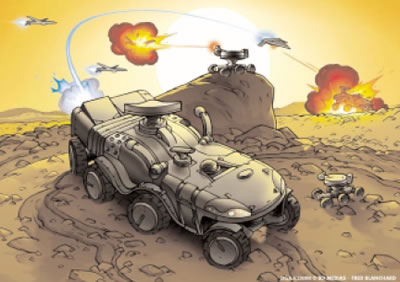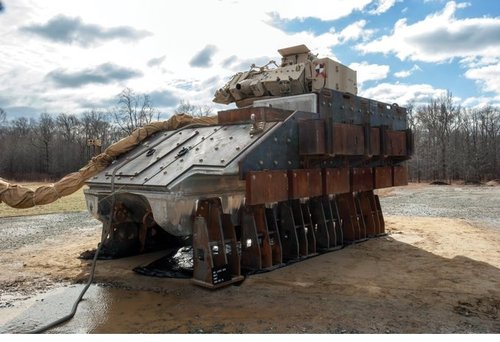The French Armed Forces has interest in weapons, autonomy, and night vision
and electronic sensors related to robots, particularly for countermine and demining applications.
The tank-based AMX30B2DT minefield breacher built by Giat Industries is an
example of a UGV for countermine operations. The remotely controlled robot passed its
testing in 2005, and plans for procurement of 10 tele-operated systems are reported.
For advanced concepts for robotic operations, Thales is heading a consortium to
develop the Bulle Opérationnelle Aéroterrestre (BOA) (French Air/Land Operational
Bubble networked air-land warfare concept) demonstrator (see Figure III-3). BOA, a
€ 144-M, 7-year French defense procurement effort, is a network-enabled, close-combat
system. BOA introduces new concepts of net-centric warfighting with existing and future
forces, as it ties together all the assets in the air-land theatre, including land vehicles, sensors,
UAVs and infantry in mounted and dismounted formations. Integration of robotics
is a major part of the effort. Planning started in 2000, and work commenced in 2005.
Other BOA project participants include Groupe SAGEM, Giat Industries, the
European Aeronautic Defence and Space Company (EADS), and MBDA (jointly owned
by BAE Systems, EADS, and Finmeccanica).44 The € 144-M budget appropriation does
not provide a breakdown showing the amount of funding that will be dedicated to UGV.
However, initial planning documents identified ground robots as a significant focus of
the effort and cited a figure of € 10M for 10 teleoperated AMX 30 tanks and € 8M for
image processing to support increased autonomy and improved teleoperation.45 These
efforts comprise only part of the planned effort (and by logical extension, probable
investment) in ground robotics.
As part of the BOA and in support of advanced integrated soldier systems, France
has been pursuing a family of smaller robots under the Mini-Robots de Choc (MiniROC)
program. This is a family of vehicles (see Figures III-4a–4c) is primarily intended for use
by dismounted soldiers in assault missions, with an emphasis on urban operations. The
family of systems features three complementary designs:
1. A manportable UGV called the Petit Robot Modulaire (PRM) (see Figure
III-4a)
2. A somewhat larger (130-kg), wheeled, articulated UGV known as Robot
Eclaireur Reconnaissance (REC) (see Figure III-4b)
3. The smallest of the MiniROC vehicles, a 2.1-kg Inbot Mini Robot Specialise
(MRS) developed for reconnaissance in confined areas such as inside
buildings and tunnels and underneath vehicles (see Figure III-4c).46
The Laboratoire d’Intégration des Systèmes et des Technologies (LIST) (Laboratory
for Systems Integration and Technology) of the Commissariat à l’Énergie Atomique
(CEA) (French Atomic Energy Commission), is a Center of Excellence for robotics.
Research interests include man-machine interfaces, the mechanical design of complex
systems, novel actuators, and intelligent control. The Interactive Robotics Unit includes
engineers, technicians, and students, a Mesorobotics and Robotics Laboratory, and a
Cobotics and Telerobotics Laboratory. The laboratory also conducts research concerning
sensors and signal processing, with potential application to robotics.
<hr>
44 Projet de loi de finance pour 2008. Defense-Environnement et soutien de la politique de defence.
(Finance Bill for 2008. Defense-Environment and support for defence policy). Available:
http://www.senat.fr/rap/a07-094-7/a07-094-71.html (Accessed January 2008).
45 Delegation Generale Pour L'Armement (DGA) (General Delegation for Ordnance) Press Release.
6 June 2002. Project BOA (Bulle Operationelle Aeroterrestre).
46 Defense Update Web Page. MiniRoc. Available:
http://www.defense-update.com/products/m/miniROC.htm (Accessed January 2008).


